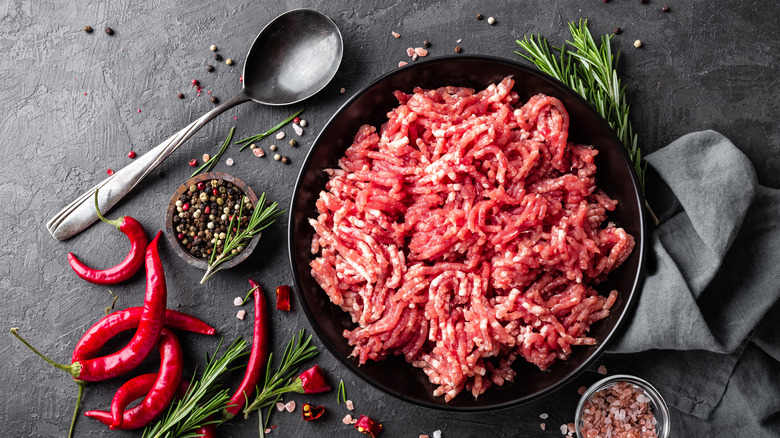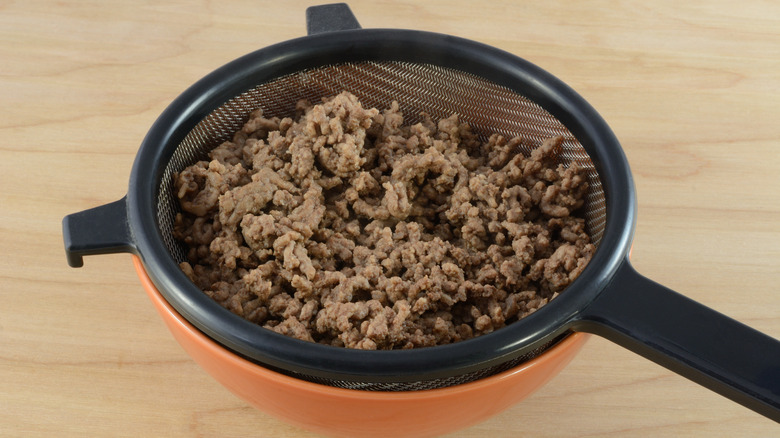Why You Shouldn't Drain Ground Beef In The Sink
Turns out that there are a lot more mistakes individuals make with ground beef than you would think. Whether it is for Taco Tuesday or Meatloaf Friday, ground beef is used frequently yet disposed of improperly. So think about it: What do you do after the ground meat comes off of the stove?
Do you drain it in the sink with a colander? Because if you do, don't. The grease from the food product can cause some serious plumbing consequences. According to Express Sewer & Drain, the grease cools down in minutes and solidifies within your pipes.
This can cause a huge blockage as other debris passes through the drain. Not only is that extremely bad for your pipes, but it can also mess with the sewer systems leading to blocked-up toilets and flooded basements. This may seem like a small feat, but trust us when we say, do not drain the grease down the sink!
How do you drain ground beef?
Now that you know the sink is off-limits, you can explore other options to get rid of the grease. Recipe Lion recommends pouring it into an old vegetable or soup can after cooking, freezing it, and then trashing it. If you choose this method, you can keep the grease in your freezer and fill it up gradually.
Other options include letting the grease harden in a bowl and throwing it away, mopping up the cooled grease with paper towels, or reusing the ground beef grease for later. Similar to oils or butter, it would be great for roasting vegetables or caramelizing onions.
If you are reading this and already drained your ground beef in the sink, don't panic, Express Sewer & Drain has a solution you can implement rather quickly. Run your faucet with hot water and while that's running, boil about a gallon of water and pour it down the drain. Continue to squirt dish soap down it in order to liquefy any solidified grease that may be sticking there. Now you'll never make that mistake again!

